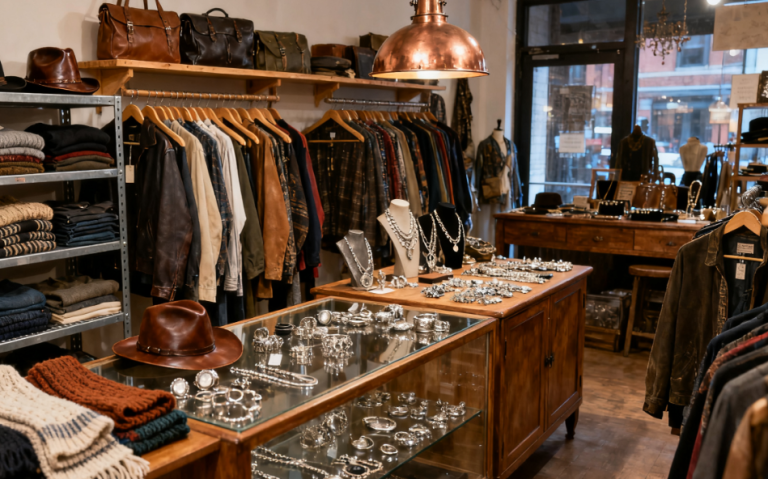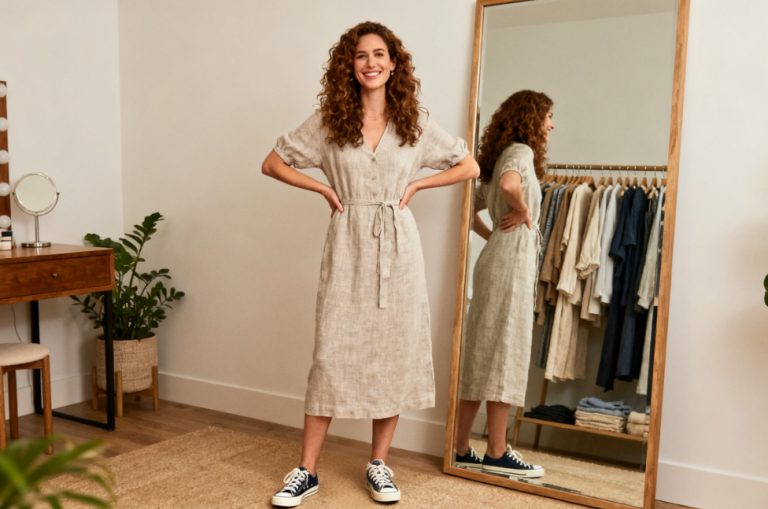
In the age of climate anxiety, fast fashion fatigue, and closet clutter, one idea has emerged as both stylish and sustainable: the capsule wardrobe. Minimalist by nature and eco-conscious at its core, the capsule wardrobe trend has become the go-to solution for anyone who wants to simplify their style without sacrificing the planet.
This guide will walk you through everything you need to know about building a capsule wardrobe that’s not only chic but also environmentally friendly.
What Is a Capsule Wardrobe?
A capsule wardrobe is a carefully curated collection of clothing items that are timeless, versatile, and designed to mix and match seamlessly. Typically made up of 30 to 50 pieces per season, it includes everything from tops and bottoms to shoes and outerwear.
The goal is to eliminate impulse buying and reduce waste while maximizing wearability and personal style. It’s fashion with intention.
Why Go Eco-Friendly With Your Capsule Wardrobe?
The traditional fashion industry is notorious for its environmental impact. From water pollution and chemical usage to textile waste and carbon emissions, clothing production is resource-heavy and often unethical.
An eco-friendly capsule wardrobe addresses these issues in several ways:
- Reduces overconsumption by focusing on quality over quantity
- Minimizes waste by choosing durable, long-lasting garments
- Supports ethical brands that use sustainable practices
- Encourages mindful purchasing habits
Step 1: Audit Your Closet
Before buying anything new, assess what you already own. Pull out everything from your wardrobe and ask yourself:
- Do I wear this often?
- Does it fit me well and suit my current style?
- Is it made from sustainable or high-quality materials?
Keep the essentials and donate, sell, or recycle the rest responsibly.
Step 2: Define Your Personal Style
Building a sustainable capsule wardrobe isn’t about following trends; it’s about curating a look that reflects your personality and lifestyle. Are you more classic or bohemian? Sporty or romantic?
Identify a color palette you love and stick to silhouettes that flatter your body. The more consistent your choices, the easier it will be to mix and match.
Step 3: Choose Sustainable Fabrics
When shopping for new pieces, pay attention to fabric labels. Look for:
- Organic cotton: Grown without harmful chemicals
- Linen: Biodegradable and requires less water
- Tencel (Lyocell): Made from sustainably sourced wood pulp
- Hemp: Durable, breathable, and low-impact
- Recycled fibers: Reduces textile waste
Avoid synthetic fabrics like polyester and nylon unless they are recycled.
Step 4: Prioritize Ethical Brands
Not all clothing is created equal. Seek out brands that:
- Use fair labor practices
- Are transparent about their supply chains
- Have third-party certifications like GOTS or Fair Trade
- Emphasize slow fashion over fast production
Some reputable eco-conscious brands include Patagonia, Eileen Fisher, People Tree, and Reformation.
Step 5: Embrace Versatility
Each item in your capsule wardrobe should serve multiple purposes. Choose basics that can be dressed up or down, layered, and styled in various ways. Think:
- A tailored blazer
- Classic white shirt
- Dark wash jeans
- Neutral-toned knitwear
- Comfortable, high-quality footwear
Less is more when your wardrobe is strategically built.
Step 6: Shop Secondhand First
Thrift stores, consignment shops, and online marketplaces like Poshmark, ThredUP, and Depop are treasure troves for sustainable fashion.
Buying secondhand not only saves money but also reduces demand for new clothing production.
Step 7: Care for Your Clothes
Sustainability doesn’t end at the purchase. Extend the life of your clothing by:
- Washing with cold water and eco-friendly detergents
- Air drying instead of machine drying
- Learning basic mending skills
- Storing items properly to prevent wear
The longer you keep your garments, the more sustainable your wardrobe becomes.
Step 8: Practice the One-In, One-Out Rule
To maintain a lean, eco-friendly closet, adopt the one-in, one-out rule. For every new item you bring in, remove one. This keeps clutter at bay and reinforces mindful purchasing.
Step 9: Revisit Each Season
A capsule wardrobe isn’t static. At the start of each season, reassess your needs. Swap out pieces for weather-appropriate ones, repair worn items, and make note of any gaps in your wardrobe.
This periodic review ensures your closet remains fresh and functional.

Common Mistakes to Avoid
- Buying all-new pieces to start your capsule: Use what you have first
- Confusing minimalism with blandness: A capsule wardrobe can be expressive
- Ignoring your lifestyle needs: A stay-at-home parent and a corporate executive will have different essentials
The Benefits Go Beyond the Closet
An eco-friendly capsule wardrobe isn’t just good for the planet. It can:
- Save time getting dressed
- Reduce decision fatigue
- Encourage financial savings
- Boost confidence through intentional styling
By narrowing your choices, you gain clarity and peace of mind.
Style With Substance
Building a sustainable capsule wardrobe is a journey, not a one-time project. It requires mindfulness, research, and a genuine commitment to both the planet and your personal values.
In a world overwhelmed by fast fashion and fleeting trends, choosing to simplify your wardrobe is a quiet act of rebellion—and one that never goes out of style.
Remember: Fashion fades, but conscious choices are always in season.


